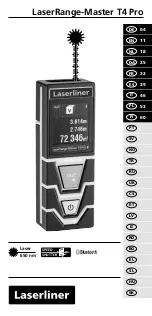
The ADV. (Advanced functions) Key
This ADV. key gathers many advanced functions which may not be used in the normal operation.
ALARM ENABLE/DISABLE
The first item for this key is the alarm enable and disable. Some alarm detections are on by default. User
can change the alarm configurations during the operation.
ALARM
Initially off, under the ENABLE group __ RDMA (Receive Distant MF Alarm)
Initially on, under the DISABLE group
AIS (UNFRAMED ALL ONES)
♦
♦
♦
♦
♦
♦
♦
♦
♦
♦
SAIS (SIGNALLING ALL ONES)
LOC (LOSS OF CARRIER)
LOS (LOSS OF FRAME SYNC.)
PLOS (PATTERN LOSS OF SYNC.)
BED (BIT ERROR DETECTED)
FRM (FRAME ERROR DETECTED)
CRC (CRC ERROR DETECTED)
BPV (BPV ERROR DETECTED)
E-b (E-BIT ERROR DETECDTED)
If an alarm item is initially on under the DISABLE group then it can be disabled by the user and will
automatically be listed under the ENABLE group. The same situation applies to the initially off items.
POWER
The power selection is a toggle switch. It is initially turned on which means the tester is running under full
operations. In some cases, the analysis is the only thing needed so user can turn off the transmitter which
can conserve more than one third of the power consumption. This way, the operating time can be extended
from eight hours to twelve hours.
POWER ____ ENABLE (will enable power conservation mode which will turn off the transmitter to
save power) Or
__ DISABLE (will disable power conservation mode which will turn on the transmitter)
Nx64
Nx64 ____ TX (Define the transmitting DS0 channel)
__ RCV (Define the receiving DS0 channel)
__ BOTH (Define both directions at once)
This item changes the tester into the fraction E1 mode. It can change usable channels for TX (Transmit),
RCV (Receive) or BOTH at the same time. The display will show thirty or thirty-one dots each represents
a DS0 channel. At the bottom of the screen it will ask for channel number to input. The valid channel
number input will be from 02 to 32. The preceding 0 will be needed for single digits. After the user types
in the channel numbers, an asterisk will replace the dot at the corresponding channel position which
represents the DS0 is enabled for use in BERT test.
The DS0 channels can be contiguous or non-contiguous on Receive or Transmit or both directions.
The unused DS0 channels will be filled with the IDLE code.
10
































